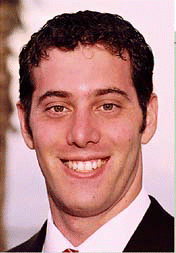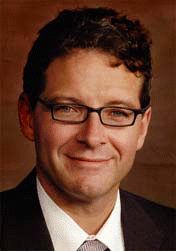SAN DIEGO-The prevalence of biofilms was discussed in several presentations at the Combined Otolaryngology Spring Meetings here. The occurrence of biofilms in chronic rhinosinusitis (CRS) and a potential new method for their removal were among the American Rhinologic Society (ARS) research topics presented April 26. The latter study was presented by ARS Basic Science Research Award winner Martin Desrosiers, MD.
Explore This Issue
June 2007In addition, another COSM presentation April 27, in the American Society of Pediatric Otolaryngology program, focused on biofilms in recurrent acute otitis media (RAOM). The researchers compared mucosal biofilm density of adenoids removed from children with RAOM and from those with obstructive sleep apnea.
An aggregate of microbes with a distinct three-dimensional, tower-like architecture, biofilms adhere to an inert or living surface. A common descriptive analogy is that planktonic bacteria are like plankton in the ocean, whereas a bacterial biofilm is similar to a coral reef structure in the sinuses. Bacterial biofilms have been a hot topic of research as scientists strive to determine their role in CRS and other diseases.
Study on Biofilms and CRS
A study conducted by researchers in the Department of Otorhinolaryngology, Head and Neck Surgery at the University of Pennsylvania indicated that 28.6% of CRS patients’ sinonasal mucopurulence had microbes that contain biofilm-forming capacity. Many of these individuals had a history of prior infections and/or multiple prior surgeries.
The scientists obtained endoscopic cultures from 157 clinic patients with evidence of mucopurulence. Biofilm-forming capability was determined using a modification of the Moskowitz method by comparing the bacteria to negative and positive controls. Biofilm formation was determined on concomitant values of biofilm-forming pseudomonas PAO1 and non-biofilm-forming mutant sad-31 (type IV pili) and sad-36 (flagella).
According to presenter Jacob Steiger, MD, when looking at the breakdown of bacterial isolates, we noted that the majority of recovered bacteria from patients were Staphylococcus aureus, of which only 15 percent formed biofilms in our assay. However, infections involving Pseudomonas aeruginosa (a total of 23 percent of all patient cultures) had a much higher incident of biofilm formation in our assay-as much as 90 percent.
Study co-authors Noam Cohen, MD, PhD, and James Palmer, MD, noted that bacteria in the biofilm are substantially more resistant to conventional antimicrobial therapy and host immune defense pathways than free bacteria and thus are hypothesized to contribute to medically recalcitrant rhinosinusitis.
Removing Biofilms
In another presentation, researchers from McGill University and the University of Montreal, Canada, collaborating with Montana State University and Medtronic ENT, described a new method that effectively removed nearly 100% of biofilms. The study tested the effectiveness of a device that uses pressure to irrigate the nose, and a citric acid zwitterionic surfactant, both developed by Medtronic ENT, which funded the study. Dr. Desrosiers, who is Associate Clinical Professor at McGill University and the University of Montreal, is also a paid consultant for Medtronic.
Two strains of bacteria, P. aeruginosa and S. aureus, were clinically isolated from CRS patients who had poor outcomes following functional endoscopic sinus surgery. The bacterial strains were grown into robust bacterial colonies and treated with a variety of commonly used therapies, including antibiotics and hypertonic saline. These existing therapies were compared to static and pressurized application of the new irrigating apparatus and irrigation solution developed by Medtronic.
Persistence of viable bacteria was assessed quantitatively by assessment of colony-forming units and semiquantitatively by confocal scanning laser microscopy. Treatment with static application of saline alone or topical antibiotic solutions at standard concentrations produced no reduction in bacterial counts. However, treatment with a new solution developed by Medtronic-citric acid/zwitterionic surfactant (CAZS)-accorded significant reductions in bacterial counts. When associated with hydrodynamic delivery, this produced the greatest reduction in bacteria. The researchers found that 99.98% of S. aureus and 99.999% of P. aeruginosa bacterial colonies were removed by the pressurized application of CAZS. When conventional treatments were applied without pressure, they had no, or only a moderate, effect. Even with a pressurized application, the conventional therapies had a lesser success in eliminating the biofilms (i.e., 99.4% for saline).
In summarizing the study, Dr. Desrosiers noted that the in vitro results confirm that conventional therapies are of little use against biofilm infections and support the idea that delivery of a soaplike surfactant with a calcium ion-sequestering agent combined with the use of hydrodynamic force can break down bacterial biofilms possibly associated with CRS.
Biofilms and RAOM
The RAOM study, presented by Giancarlo Zuliani, MD, of the Division of Pediatric Otolaryngology at Wayne State University in Detroit, also pointed out the wide variety of recalcitrant infections linked to biofilms.
Recurrent acute otitis media in the pediatric population is a poorly understood disease with a wide range of etiologic factors that often require many rounds of antibiotics or surgical interventions, Dr. Zuliani said.
Noting that biofilms were present in the nasopharyngeal samples that were collected by his team, he said the degree to which biofilms are present in relation to controls is striking and should not be ignored. Average mucosal biofilm density was 90.5% on adenoids removed from children with RAOM versus 1.4% on those from children with obstructive sleep apnea. In addition, the biofilms identified from otitis-prone children appeared to be multiorganismal and mature.
Dr. Zuliani noted that biofilms are complex microenvironments containing sessile organisms that intermittently shed metabolically active planktonic organisms. Intermittent shedding of planktonic middle ear pathogens from the nasopharynx may help explain the recalcitrance and recurrence of otitis media, he said, adding that the clinical benefit seen with adenoidectomy in RAOM may be due to mechanical debridement of these resistant nasopharyngeal biofilms.
The differences noted in the study have prompted us to propose a new paradigm shift in the etiology of RAOM, stressing the importance of the nasopharynx as a nidus for chronic infection, Dr. Zuliani said.
The Bottom Line
While all three biofilm studies offered important new information about the prevalence of these bacterial types in CRS and RAOM, plus a new method to remove biofilms, the studies did not prove that bacterial biofilms actually cause the two conditions. As one audience member pointed out, despite the obvious implication of involvement, we still need to prove that biofilms are causative and not just bystanders.
©2007 The Triological Society




Leave a Reply